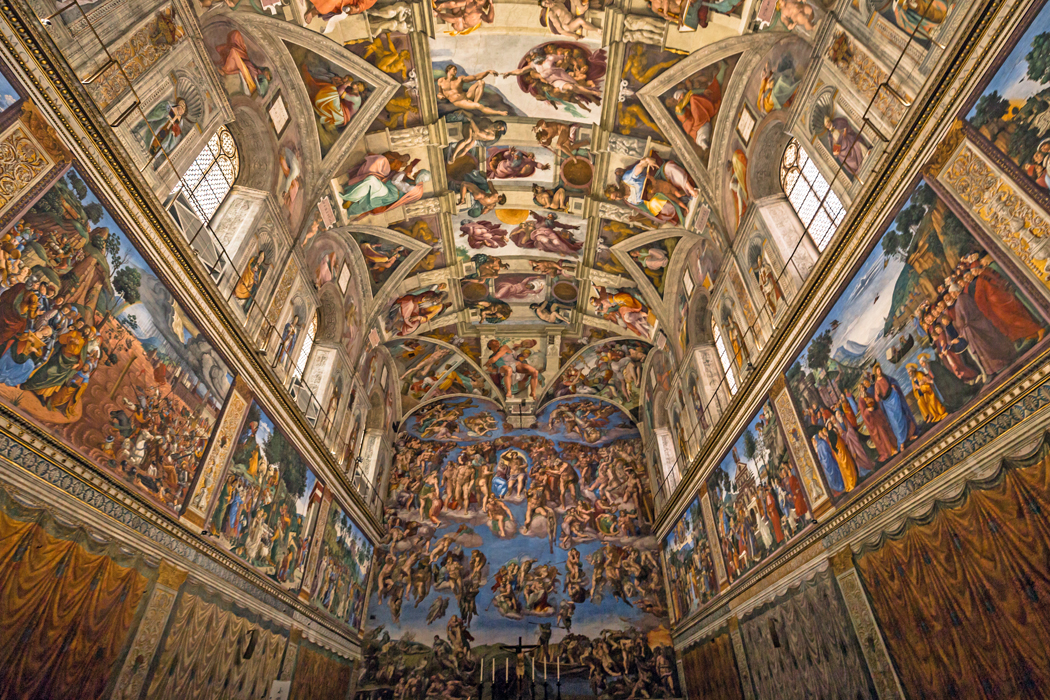Shorty, quill brush in hand, would pallet his turpentine and 1 Shot mix with five or six quick sweeps across the page of an old Newsweek magazine and then settle the brush, as if it were magnetically charged, to begin a crisp stroke along a blue-chalk dotted pounce pattern – the same system Michelangelo used in his Sistine Chapel murals – except Shorty was making signs for Sears Roebuck and not an image of God. A kid then, I stood in Shorty’s jam-packed signshop and marveled at the man’s brush skills. I also learned about pounce patterns, which eventually became a treasured skill. Ten years later, my friend Shorty, by then retired, had returned to his original passion of oil painting and asked me to attend a local art-club show, where he was an exhibiting member. I did. The show mostly comprised nicely framed images of roses, chrysanthemums, mountain lake settings (oddly lacking reflections in the water), clowns and two renderings of cute cocker spaniels.
I finally stepped into the venue’s last chamber and there, alone and easily overlooked, was a painting that would have made Albert Bierstadt smile. A broad image of the nearby Rocky Mountains entwined in a stormy sunset with an expansive color pallet, blended gradations, looming clouds, spaciousness, perspective and color intensity that resulted only from the sophisticated layering of glazes. In any show it was a prizewinner; here it was a masterpiece, but one with no awards or ribbons. Obviously, Shorty was highly skilled in art but not club politics.
I recently visited EclipseCorp (Columbus, OH), a type of signshop that specializes in displays, photo and video work, large- and small-format printing and creative services – the latter a catch-all statement. I drove there to see a demonstration of the Massivit 3D digital printer. If you’re into fabricating static displays, find and see this 3D print machine. Close to the size of an ice cream truck, the Massivit 1800 will quickly print life-size Frankenstein monsters, hippos, clowns, Warhol soup cans, bus-side bas reliefs or, get this, channel letters of a type. (Contact annette.habani@massivit.com). But, I’ve seen and covered this machine previously and am continuously impressed that it will create 70-in. high figures, but it’s not what held my attention. Instead, I was mesmerized by EclipseCorp’s hangar-sized signshop building with its three large-format digital print machines running unmanned and, to one side, I found myself studying a young woman sewing digitally printed fabric. She appeared to be making fabric tradeshow signs.
TECHNOLOGY, DRAWN OUT
Because the US tradeshow market is roughly $15 billion and because almost all modern tradeshow signage involves printed fabric, and because most signshops are reluctant to bring in the finishing operation – patterning, sewing, seaming and attaching various types of fasteners – I was curious to learn a bit more. Who better to ask than the person doing it?
I visited the seamstress and asked, “You’re sewing tradeshow signs?”
“Yes,” she said, deftly setting the printed fabric across the machine’s needle plate.
Advertisement
“Am I right that you’re working on oddly shaped tradeshow signs, the weird stuff that designers and ad agencies make up?”
“Yes,” she looked up at me and smiled slightly; then I saw her instinctively bring the needle and foot down, to hold the fabric in place.
I said, “May I ask you about the patterns? Like, does your shop designer provide cut patterns for such fabric signs?” She was still smiling, so I continued, “Or, do you have a software that helps you design and cut your patterns?”
She was aligning a seam behind the needle, but stopped and looked directly at me. She thought for a moment and blushed just a little, then said, “Sometimes I use software, but if it’s a really complex pattern, I get large sheets of paper … and just draw it.”
We both laughed. I knew this one; I’d made and formed paper patterns for sheet metal benders, so they’d see how to form a multipart design. I said, “And then you cut out your drawn pattern and assemble it, to see if it meets the drawing standards?”
“Yes,” she said. “That way I know it will work.”
Advertisement
Great information. She had provided a hands-on simplification of a difficult problem. Later, I remembered my AutoCAD instructor who, after assigning a perspective drawing of a tightly coiled spring, said, “Sometimes it’s easier to just draw an item than try to have the software do it.”


 Tip Sheet2 weeks ago
Tip Sheet2 weeks ago
 Photo Gallery3 days ago
Photo Gallery3 days ago
 Ask Signs of the Times5 days ago
Ask Signs of the Times5 days ago
 Real Deal2 weeks ago
Real Deal2 weeks ago
 Paula Fargo19 hours ago
Paula Fargo19 hours ago
 Benchmarks1 week ago
Benchmarks1 week ago
 Photo Gallery19 hours ago
Photo Gallery19 hours ago
 Women in Signs2 weeks ago
Women in Signs2 weeks ago












